Blind, Dark Place, Playhouse, The Honeymoon Phase, The Horror Crowd, They're Outside (2020)

Day three, and I’m looking forward to an afternoon and evening in the living room with the television and my Roku stick. It looks like FrightFesters are in high spirits following the duo of 12 Hour Shift and Triggered – both of which blew people away. Now we’re into the real meat of things: the weekend. Saturday, Sunday and Monday are generally reserved for the biggest, and ballsiest, horrors. This digital version of the festival looks like no exception. Today there are relationships turned terrible, a haunted castle and a trip down under. Note that customers only got to see four of these films, though I was fortunate enough to receive preview screeners of both The Horror Crowd and They’re Outside in advance. Anyway, time for some chip and dip.
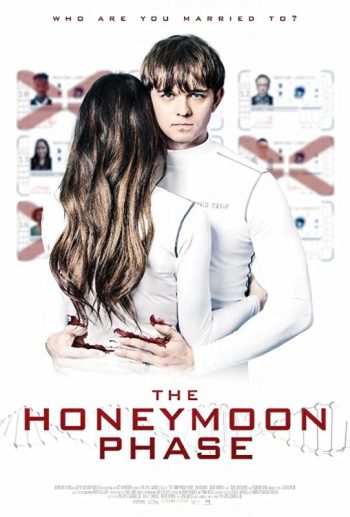
THE HONEYMOON PHASE
Directed by Phillip G. Carroll Jr.
Writer/ director Carroll Jr plays matchmaker to the pairing of Black Mirror and Fatal Attraction in this a sci-fi horror all about trust. Tom and Eve are happy to lie to a team of researchers that they’re newlyweds, to partake in a scientific trial called The Millennium Project and end their financial woes. But are they also lying to each other? This is the movie’s central question, as the couple goes under the microscope for a month in a smart home to investigate why it gets worse for couples who tie the knot. At first, everything seems to be going ok, with only Tom’s sexual performance taking a knock. Still, no biggy (that’s what she said!) However, shortly after, Eve notices changes in her boyfriend’s behaviour – is he the same guy she pretended to marry? Then, on day 11, she breaks out some LSD-laced cookies, and things take a turn for the worse.
In contrast to the phenomenon it’s named after, following a messy start The Honeymoon Phase gets better as it goes on. The scene-setting is near enough non-existent, with Carroll Jr seeming in a hurry to get his two young lovers in the house. It makes sense – he’s got a good concept here. But without getting to know them or their situation first, they feel like vehicles for the plot rather than people in their own right. Still, the montage, once they’re in, complete with a cheesy sex-song, had contagious energy to it – so I did warm to them. It helps that Chloe Carroll is so good as Eve. Her transition from being slightly suspicious to scared for her life was handled well and added a lot of tension -even though it’s way too obvious from act 1 where the story is heading. Jim Schubin was less impressive, being able to do Tom is sugary or scary but selling these duel sides of him as a single character. There isn’t a halfway state. The darker bits, which there are a few of, still have an impact – particularly one that shows incorrect curling iron use. Though I think they could have been more pronounced with an actor who could better bring his conflict to life. Otherwise, parts of it watch too much like a soap opera.
Nonetheless, the film (mostly) works. Its tone may be inconsistent, with the jaunty scenes and dark ones making for odd bedfellows – but arguably that’s like any relationship. It also may never quite achieve intensity, lacking a couple of big moments before the too packed to be scary (and at one point fairly tasteless) homestretch. Still, The Honeymoon Phase establishes a sense of threat and helplessness early on and escalates it well. Like its central relationship, a lot is going on below the surface. We have a compelling look at microaggressions, paranoia, gaslighting and what happens when partners want different things. These elements are worked seamlessly into the science fiction fabric, including the more out-there aspects, acting as an exaggerated version of something real. Genre entertainment and a serious message can be hard to marry, but this does it well. On a personal level, it also warmed the heart to say Francois Chau, who was the face of the Dharma Initiative on Lost, giving their orientation. However, like when things go badly in real life, the uneven pacing and soso script meant I found myself lamenting what it could have been. In short, if someone asks if I’d recommend it, I’ll say “I do”. Though perhaps with less enthusiasm than I’d like to.
Rating: 




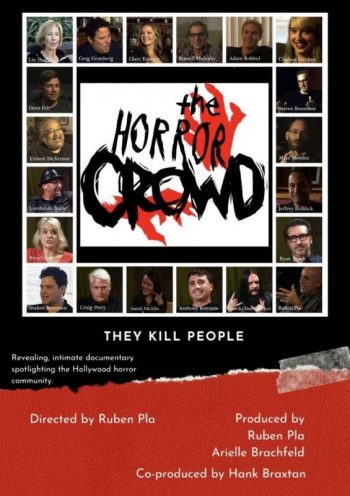
THE HORROR CROWD
Directed by Ruben Pla
Fear, Ruben Pla declares, is the most primal of emotions. It’s also been both a big part of his personal life, in which he’s a fanboy of scary films/ books, and his professional one – since he’s appeared in such movies as Insidious, Contracted and Big Ass Spider! As such, it makes sense that his first feature-length outing as a director is an unusually intimate documentary which celebrates the people who create these things for a living. They say go with what you know, after all, so Pla’s rounded up many of his movie-making buddies to find out if they are as strange as their creations. Along the way we learn about the flicks that inspired them, cover diverse topics like racial representation, men and women’s experiences or fear and even film festivals such as FrightFest. Still, while there are a lot of useful observations, and some decent clips, it is hard to recommend this to casual fans.
The introduction shows a rogue’s gallery of killers and monsters, from Dracula to the Xenomorph. Yet there is no genre A-list power, with the majority of the guests being cult figures. I’d say the most prominent stars are probably Oren Peli, Lin Shaye or Darren Lynn Bousman. For horror devotees this won’t be a bad thing – heck, I love them all for different reasons – even if it’s not a starting point. Besides, I’m sure we’ve all heard the same well-rehearsed stories about how Carpenter came up with Halloween or seen archive footage of Craven impersonally discussing dreams, so it’s fun to focus on horror’s fringes. Moreover, it’s refreshing to see less well-known oddities getting celebrated than the films you’d expect. Still, I doubt viewers who aren’t well versed on the current American indie scene will gain much besides a new to-watch list. It’s also hard not to come away with the feeling that we’re watching less famous people talking about more famous people, and some guests and anecdotes are only tangentially linked to horror. For instance, Greg Grunberg shows up to comment on Star Trek/ Wars and Razorback director Russell Mulcahy talks about making Highlander. I always expecting to see footage from Happy Feet.
Yet on the plus side, and this is a massive plus, since the subjects are Pla’s pals they’re unguarded around him and even willing to appear vulnerable. He evidently has their confidence and empowers them to open up about candid topics such as the impact of both losing and becoming a parent had on their career. It was also touching to see so many of them talk about how their way into horror came from feelings of displacement or being bullied: experiences I expect lots of us can relate to. If nothing else, horror champions underdogs. He even gets them to briefly think about their own worst characteristics and share their biggest anxieties. In that respect, this is far more personal than the usual behind the scenes stuff and sets a new standard for this kind of documentary. Yet it’s never too serious since we’re only ever minutes away from Ruben having a high-five or a belly-laugh with someone. Admittedly, the very individual nature means it can get a little too personal or specific. Memories of how folks met their significant others and a long section about a pub which was a regular haunt for creatives made me feel I had to be there to get it. Still, the broader point about community is a powerful one and reinforces that this is a love letter from a fan about fans, to other fans. Either this lot are no longer the weird kids, or all of us are.
Rating: 




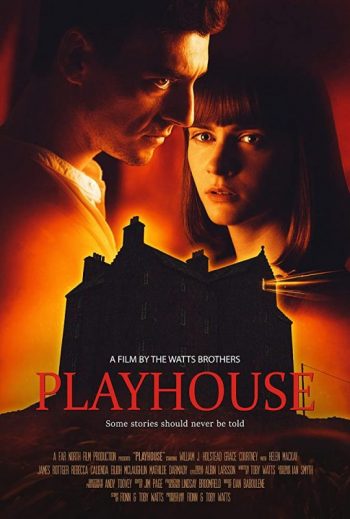
PLAYHOUSE
Directed by Toby Watts & Fionn Watts
Jack Travis is a well-known horror writer working on his magnum opus: an immersive theatre show set in a secluded Scottish castle. He’s bought it, with his West End money, to do it up and immerse himself in its history: a macabre tale involving a philandering baron and the bastard offspring he has with his maid. But while Jack conjures up his latest nightmare, putting his blood, sweat and tears into it, an evil curse that lurking within the walls gets a hold on his teenage daughter Bee. It won’t be easy getting help either. There’s nobody about, except for teachers on sabbatical Jenny and Callum, who are doing up a nearby cottage to sell it (the latter objects because the countryside is “boring and shite”). That’s if Jack can prize himself away from his masterpiece long enough to realise something’s amiss.
The first thing you notice about Playhouse is it looks spectacular. The cinematography suggests a way bigger budget than the makers will have had, and the castle itself is a brilliant location, rich with atmosphere. The backing story the Watts brothers have come up with is serviceable too, even if it’s quite ordinary – which is ok, given the movie’s very much in the classic Gothic tradition. And for the first half, the air of dread meant I was mostly able to overlook the occasionally repetitive dialogue and slow pace. The characters are at their best during this bit, with Jack being warmer and more excitable than we see him again. We also have maybe the most delightfully awkward dinner scene since Hereditary when Jenny and Callum go round for tea. However, it was a scene with Bee and her friends playing truth or dare was my highlight, combining good character work with a sense of peril.
Some of the storytelling, from the second half onwards, was baffling though. I like when film’s do something unexpected, like switch protagonists halfway through, but here it seemed more messy than methodical. The lack of defined perspective, or even a villain, before the final third means the script spends so long making each character seem a bit sinister until there’s nobody left to root for. The hammy acting, which I expect was a stylistic choice, further hampers their relatability. Bee should be the protagonist, though she’s also written out of it for long stretches, during which others barely comment on her absence. The small supporting cast also stops appearing. Not that there’s much for them to do storywise, though they could have made for good kills to up the danger since a small cast suggests an even smaller body count. As the threat becomes increasingly abstract, the storytelling hinges more and more on a central metaphor, about artists needing to go to dark places for their work. It’s fine in theory, but the way it gets presented is too laboured, and the thematic resolution to builds to is both too neat and short. It doesn’t help that it happens just as it’s beginning to get going.
Rating: 




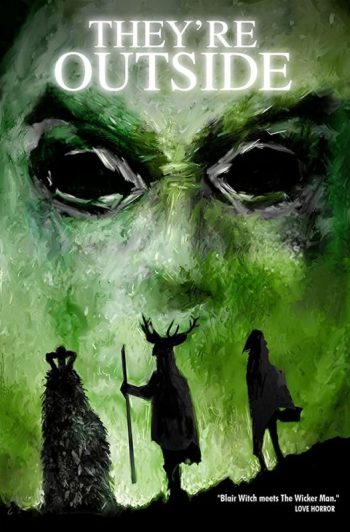
THEY’RE OUTSIDE
Directed by Airell Anthony Hayles & Sam Casserly
A found-footage take on folk-horror, They’re Outside is a film within a film. The wrap around is about the mysterious suicide of a Sussex based former TV presenter, turned teacher, Penny. While the bulk of it, which she also appears in, is about her friend Sarah: an agoraphobic woman who lives alone. Sarah decides to seek out support by appearing on the YouTube show Psychology-Inside/Out. It’s a hit series, with 510k subscribers, and is hosted by Max Spencer: a slick, sleazy guru, all style no substance, who’s more interested in his reputation than his subjects. He reckons he can have Sarah out and about within ten days – no mean feat since she hasn’t left in five years, following the tragic death of her daughter. Through her, and Penny when she visits, he gradually learns about the creepy local legend Green Eyes, who haunts the town of Hastings. And he finds himself in a grim fairy-tale.
This is a frustrating example of a film where I liked all the story beats, but not the way they were told (a sentiment Game of Thrones fans will understand). Conceptually, They’re Outside is a cool idea, with decent lore (developed well through paintings and an intro that includes Nicholas Vince) and a captivating mystery at its core. However, some of the decisions backfired. For example, I get that we usually expect the hero will live until the third act. Still, if a movie is immersive enough then, in the moment, we forget about this understanding of structure. Here we’re not able to, with two of the few scare scenes being introduced by the person they involve as they watch them on a video after they’ve taken once. One is even dismissed before it’s shown to viewers. It’s jarring and hugely reduces their potential suspense. I would also have liked to see the threat developed earlier on. Green Eyes, or the possibility he exists, lingers at the story’s peripheral until late. Throughout, he isn’t characterised beyond a basic modus operandi of knocking and then losing characters in “the woods”. Disappointing, because of how intriguing he is.
The character work is slightly more satisfying, even if the cast is not always able to sell the emotions of the scene (Emily Booth is the exception as Penny). Sarah is very literal and anxious about being on camera – making the bit she can dip her toe outside feel like a mini victory. I also liked seeing her extensive VHS collection. Still, her shyness, coupled with a fairly surface-level script that defines her by this plus her grief, means we’re at an emotional distance. It doesn’t help that our way into her head comes from Max, who is an unlikeable lead. I love a good rogue, but he isn’t charming enough to make his selfishness, dishonesty and misogyny traits I could overlook. Especially when his girlfriend/ cameraperson Nicole, who he routinely mistreats, is an altogether more affable presence. Attempts to give him an extra layer, making him more sympathetic to both us and potentially Sarah, also come too late in the narrative. Hence what should be a motivator seems more like an afterthought. Being fair, I thought where the story eventually takes him was right, if unearned. But like a wander in the woods, the journey to get there is arduous.
Rating: 




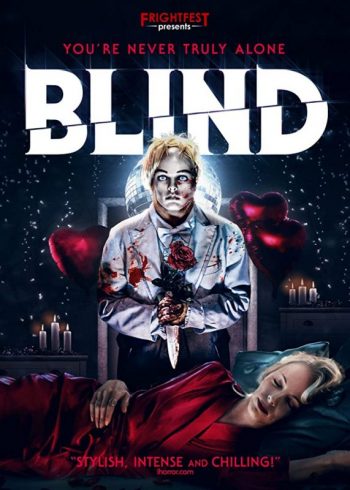
BLIND
Directed by Marcel Walz
This film looked like the day’s most promising one. Faye is a formerly successful actor whose time in the spotlight took an unfortunate turn when she lost her vision following a laser eye surgery mistake. Stuck in Hollywood, but unable to get any parts, she stays in her sizeable house with no company save for the visits of her similarly blind friend Sophia and her mute physical trainer Luke. She’s alone – or so she thinks. In the basement lurks her number one fan – an infatuated man in a Ken-Doll mask, credited as Pretty Boy, who either want to fuck her, kill her or both. Whatever his end goal, he definitely doesn’t want to share her. So you can bet he’s thrilled when she and Luke develop a romantic tension with one another.
The first thing to say about Blind is if you go in expecting a suspenseful sensory horror, like Hush or Don’t Breathe, you won’t find it. Instead, this film is an uber-bright, super camp melodrama with multiple lengthy dance sequences to 80s pastiches that have very on the nose lyrics (e.g. “love is blind”). It’s this music video land that I like to think it takes place. Everything in it’s so extra, with soapy acting and a script that’s all telling and no showing – one laughably long monologue stands out. Faye’s inability to smell the blood of her friends on Pretty Boy also puts to rest myths about people who lose once sense sharpening others. Structurally, it’s a mess too – a repetitive cat and mouse game, in which the mouse has no idea the cat even exists. What little tension there is gets repeatedly undone by the soundtrack too.
Yet despite all this, I think I love it. It’s sure as heck not for everyone, and I’m hesitant to give it a star rating because none are appropriate. However, as a sensory experience, it’s mesmerising. Visually it’s maybe the most impressive film from the festival thus far, with a flamboyant aesthetic that stands in stark contrast to theme. It’s maybe intended as a superficial comment on Hollywood’s superficial veneer – I can’t say I thought about it much. All I know is I was hooked on its dream logic and presentation. I like that it also delves into how blindness changes not just the practical parts of Faye’s daily life, but also her self-concept too. Scenes like when the delivery guy recognises her from a past life, one she has closed the door on, are sad in an in yer face way. The romance with Luke is also laughably syrupy, but boy I’d be lying if I said it didn’t make this old romantic grin. It’s appropriate the organisers gave it the post-dinner slot, as its the movie equivalent of cheesecake when you’re full (you can have that for the poster). Decadent and excessive, yes. But delicious all the same. And soon to be a cult classic.

DARK PLACE
Directed by Kodie Bedford, Liam Phillips, Robert Braslin, Perun Bonser & Bjorn Stewart.
Every festival needs an anthology. In Dark Place, a team of talented directors offer a quintet of tales all based upon exploring Aboriginal Australian history. It couldn’t be better timed, with this collection looking at the impact of UK colonialism coming out as our country loses its collective shit over a manufactured story about Rule Britannia. And while there isn’t a throughline per se or wraparound material, the motif of giving voice to oppressed communities runs right through it. It’s a fascinating subversion from old Aussie hits about white families being bothered by ‘the other’. I said in yesterday’s diary that horror is at its best when it challenges the establishment. Well, Dark Place is a powerful middle finger to systematic racism across different centuries, and a plea to hold ourselves accountable and confront the past. Five films, in five very vastly different styles, with this one urgent message.
It’s tough to say much about the shorts themselves since they are between 10 and 20 minutes long. However, Kodie Bedford’s hard-hitting Scout is a harrowing revenge story about exploitation and female empowerment. A brutal, unflinching look at objectification and privilege, that’s also profoundly moving. In Liam Phillips Foe an insomniac questions her sanity. It’s a bleary, and frightening, depiction of when you can’t switch off in a world that’s on 24/7 as well as an example of a very familiar framework, someone recording themselves sleeping, being used freshly. Next, supernatural forces visit a housing commission estate in Vale Light, by Rob Braslin. I wasn’t wholly impressed by the direction it takes, with a few too many plot points going unexplained, but the relationship between the young mum and her daughter is exceptional. Perun Bonser’s The Shore was probably my least favourite and is more of an expressionist mood piece than a plot. Still, it’s a welcome change of pace with some beautiful imagery and an enjoyable ambience about it. I wouldn’t be surprised if it’s a lot of viewers’ highlight.
Then we come to Bjorn Stewart’s allegorical tour de force Killer Native, which watches like a blend of Evil Dead’s bloody violence, The Nightengale’s ideas and the Carry On franchise’s slapstick. It lures watchers into a false security, with a pair of bumbling Brits faffing around in the forest before arrogantly declaring the land their own. They then bump into a bushman who warns them of a monster in the area. What follows is a tongue in cheek period piece that both mocks the moral hypocrisy of the settlers and angrily attacks their entitlement over stolen land. Building to a blood bath, in which the legacy of the empire is laid bare, and we see what the Brits built their homes on. Hilarious, yes – but with a meaning that’ll stick with you long after the joke ceases to be funny. If this doesn’t end up being the best of the fest, I’ll be surprised.
Rating: 




Thank you for sticking with me ‘til this point, if you have done. It’s been another mix of the highs with the lows, and it has made me wonder if the boys are saving the big ones for October – when people may be back in the big screen. There’s no Relic, The Lodge, The Rental or even The Onania Club. Still, I’ve enjoyed the day and shall hopefully enjoy what’s left of the night. See you tomorrow.

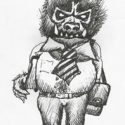
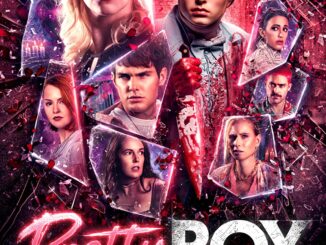

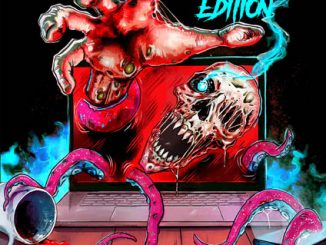
Be the first to comment